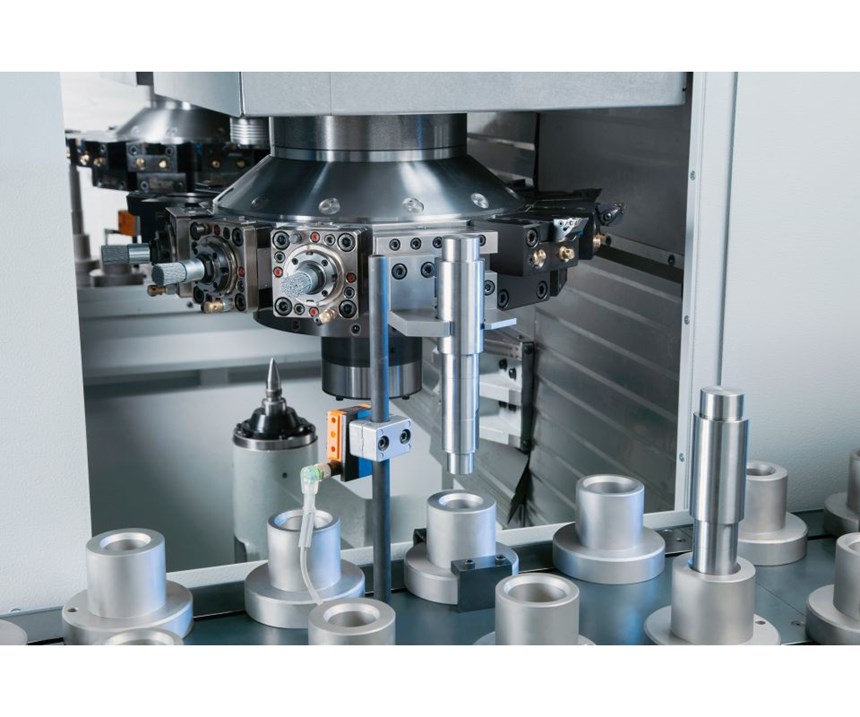Vertical Turning in Electric Motor Production
As the demand for electric motors in the automotive industry grows, new transmission systems will continue to become more efficient. Here’s a vertical turning solution to address the productivity challenges associated with the demanding manufacturing process for related shaft components.
As the demand for electric motors in the automotive industry grows, new transmission systems will continue to become more efficient. According to the latest EU guidelines on the manufacture of electric motors, the energy efficiency of many electric transmission systems is to be increased by 30 percent. The manufacture of these components not only calls for more effective solutions, but also increases the demands on related components.
According to Dr. Guido Hegener, managing director at Emag Salach Maschinenfabrik GmbH, companies must focus on the demanding manufacturing process for shaft components, keeping idle times short and component costs low without losing flexibility in the production process.
To address these challenges, Emag has developed a solution for the machining of shafts up to 400 mm (15.7 inches) in length and 63 mm (2.5 inches) in diameter. The VT 2 four-axis vertical pick-up turning machine is designed for fast chip-to-chip times and ensures component costs are kept low. Workpiece pick-ups are used to transport the raw parts into the machine and retrieve them again upon completion of the machining process. Depending on the component, the change-over time can be as short as six seconds.
The actual turning process, with spindle speeds of up to 6,000 rpm, also helps to achieve short cycle times. The shaft is clamped vertically between the work spindle and the tailstock and is machined from two sides. This work is done by two turrets with 12 tool stations each. The stations can be equipped with turning tools and driven tools (with one station being occupied by the pick-up device). For milling work (required for keyways, for example), the machine can be equipped with a Y axis. The vertical alignment of the workpiece ensures permanent process integrity, where the unhindered chip flow prevents the build-up of chips in the machining area.
Visit Emag.com for more information.
Related Content
-
Choosing the Right Machine for Turned and Milled Medical Parts
The medical market is known for exceptionally tight tolerances and difficult materials, which means that selecting the proper machine is necessary to ensure a job is profitable.
-
Getting More Production From Swiss Turning Centers
Buying a new CNC Swiss turning center is a substantial investment. For the best return, look closely for capabilities that enable the best utilization of the machine.
-
Laser Technology "Turns" into a Turning Tool
This new technology uses a laser to act as a cutting tool to "turn" parts from solid barstock. This high-speed precision turning machine is especially useful for micromachining, enabling high accuracy for small, complex parts that are often delicate and difficult to machine when implementing conventional turning processes.








.jpg;maxWidth=300;quality=90)



.jpg;maxWidth=300;quality=90)

